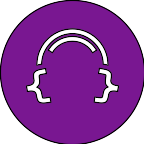Description:
Understanding Chords:
Before we start creating harmony in TunePad, let's take a moment to understand what chords are and how they work.
- A chord is a group of two or more notes played together at the same time. Chords provide the harmony that supports the main melody of a song.
- The most basic type of chord is called a triad, which consists of three notes: the root, the third, and the fifth. To create a triad, you start with the root note and then skip every other note until you have three notes in total.
- The quality of a triad (whether it's major, minor, or something else) depends on the intervals between the notes. A major triad has a root, a major third (four semitones above the root), and a perfect fifth (seven semitones above the root). A minor triad has a root, a minor third (three semitones above the root), and a perfect fifth. See the crash course on music concepts (part one)
- In TunePad, you represent notes using numbers, where each number corresponds to a specific pitch. For example, the number 60 represents the note C4 (middle C), 61 represents C#4, 62 represents D4, and so on.
Now that you have a basic understanding of chords and how they're represented in TunePad, let's explore how to create them using lists.
Creating Chords in TunePad:
- Open TunePad and create a new project. Give your project a name that reflects your exploration of harmony, such as "Harmony Explorer."
- Click the "+" button to add a new cell, and select "piano" as the cell type.
- In the code editor, create a simple melody using the playNote() function. For example:
playNote(60, beats=1)
playNote(62, beats=1)
playNote(64, beats=1)
playNote(65, beats=1)
- Let's add harmony to your melody by playing multiple notes simultaneously using a list. Modify your code to include the playNote() function with a list of notes to create a chord:
playNote(60, beats=1)
playNote(62, beats=1)
playNote(64, beats=1)
playNote(65, beats=1)
playNote([60, 64, 67], beats=2)
In this example, the last line of code will play the notes C (60), E (64), and G (67) together for two beats, creating a C major chord. By putting the note values inside square brackets [], you create a list that the playNote() function uses to play all the notes at the same time.
- Experiment with different chords by modifying the note values in the list. Here are a few examples to try:
playNote([60, 64, 67], beats=2) # C major
playNote([62, 65, 69], beats=2) # D minor
playNote([64, 67, 71], beats=2) # E minor
playNote([65, 69, 72], beats=2) # F major
- Listen to how each chord sounds and notice the different emotions and moods they evoke. Try placing the chords at different points in your melody to see how they affect the overall feel of your composition.
- Now it's your turn to create your own harmony! Experiment with different chords.
- When you're happy with your harmony, click the "Share" button in the bottom right corner of the TunePad window, choose sharing & collaboration, then "view-only," and copy the URL.
- Submit the URL to steamville




